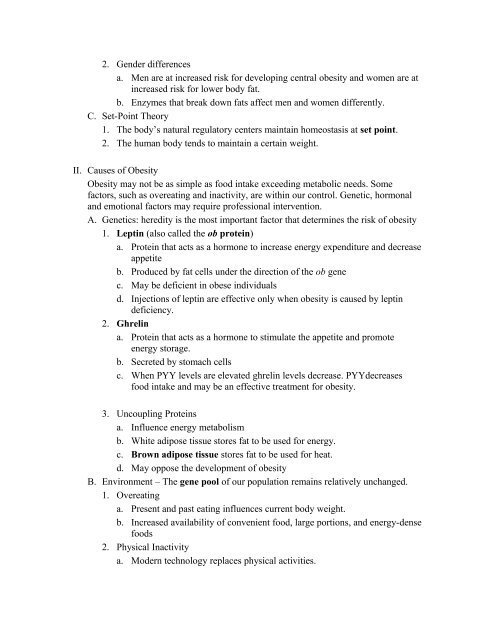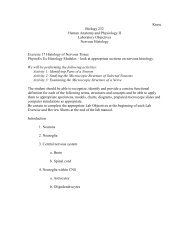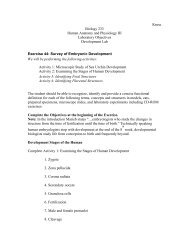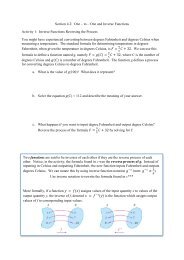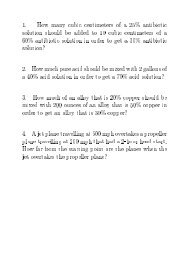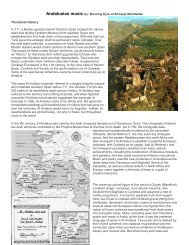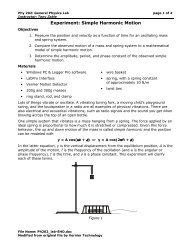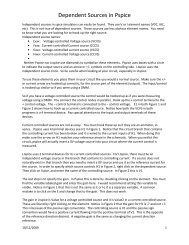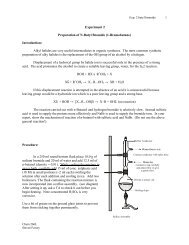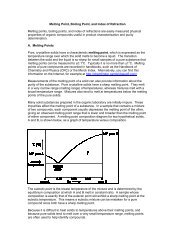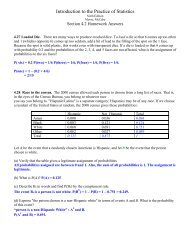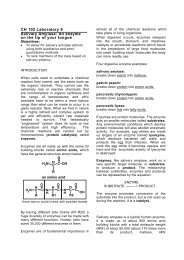Chapter 9 – Weight Management: Overweight, Obesity, and ... - PCC
Chapter 9 – Weight Management: Overweight, Obesity, and ... - PCC
Chapter 9 – Weight Management: Overweight, Obesity, and ... - PCC
Create successful ePaper yourself
Turn your PDF publications into a flip-book with our unique Google optimized e-Paper software.
2. Gender differences<br />
a. Men are at increased risk for developing central obesity <strong>and</strong> women are at<br />
increased risk for lower body fat.<br />
b. Enzymes that break down fats affect men <strong>and</strong> women differently.<br />
C. Set-Point Theory<br />
1. The body’s natural regulatory centers maintain homeostasis at set point.<br />
2. The human body tends to maintain a certain weight.<br />
II. Causes of <strong>Obesity</strong><br />
<strong>Obesity</strong> may not be as simple as food intake exceeding metabolic needs. Some<br />
factors, such as overeating <strong>and</strong> inactivity, are within our control. Genetic, hormonal<br />
<strong>and</strong> emotional factors may require professional intervention.<br />
A. Genetics: heredity is the most important factor that determines the risk of obesity<br />
1. Leptin (also called the ob protein)<br />
a. Protein that acts as a hormone to increase energy expenditure <strong>and</strong> decrease<br />
appetite<br />
b. Produced by fat cells under the direction of the ob gene<br />
c. May be deficient in obese individuals<br />
d. Injections of leptin are effective only when obesity is caused by leptin<br />
deficiency.<br />
2. Ghrelin<br />
a. Protein that acts as a hormone to stimulate the appetite <strong>and</strong> promote<br />
energy storage.<br />
b. Secreted by stomach cells<br />
c. When PYY levels are elevated ghrelin levels decrease. PYYdecreases<br />
food intake <strong>and</strong> may be an effective treatment for obesity.<br />
3. Uncoupling Proteins<br />
a. Influence energy metabolism<br />
b. White adipose tissue stores fat to be used for energy.<br />
c. Brown adipose tissue stores fat to be used for heat.<br />
d. May oppose the development of obesity<br />
B. Environment <strong>–</strong> The gene pool of our population remains relatively unchanged.<br />
1. Overeating<br />
a. Present <strong>and</strong> past eating influences current body weight.<br />
b. Increased availability of convenient food, large portions, <strong>and</strong> energy-dense<br />
foods<br />
2. Physical Inactivity<br />
a. Modern technology replaces physical activities.


